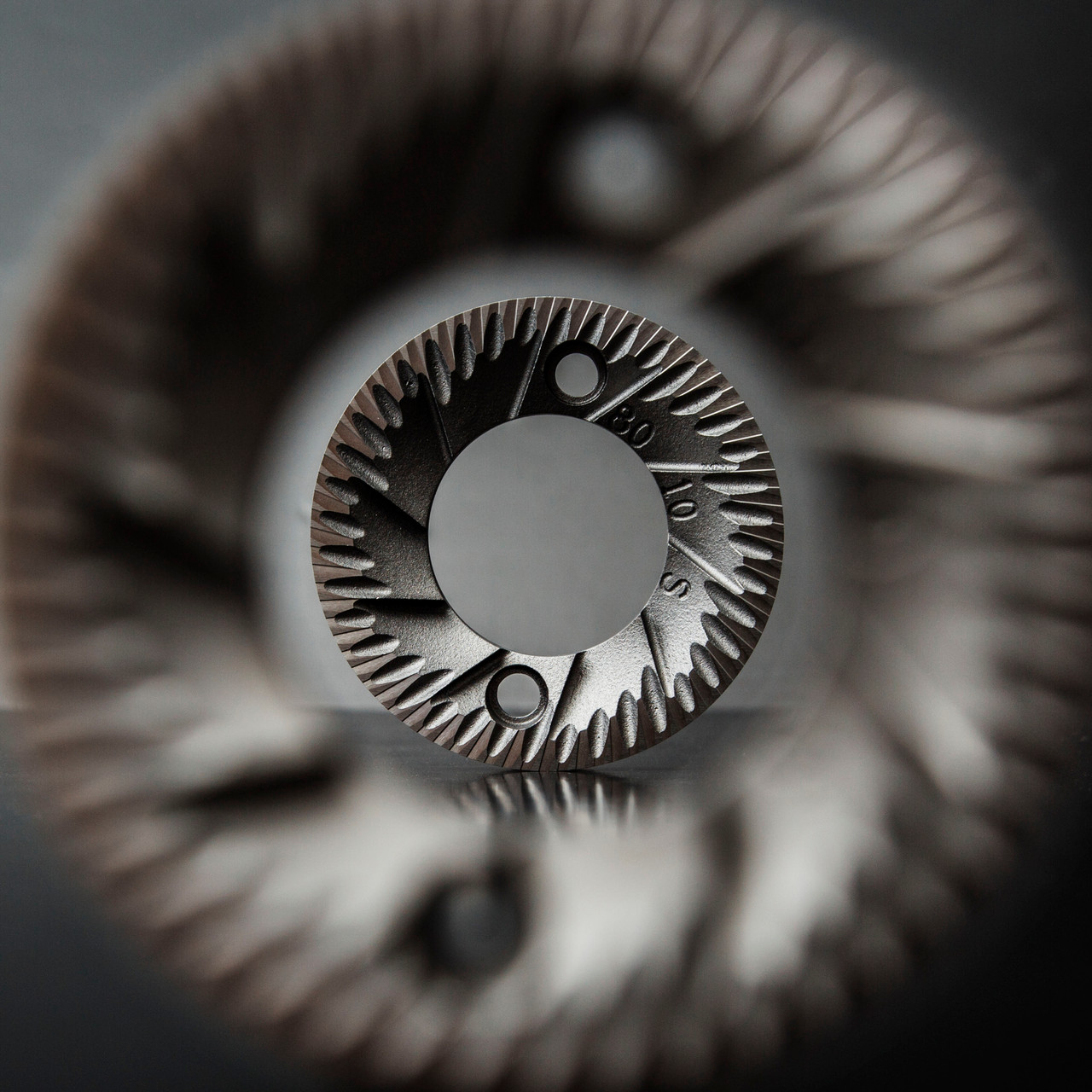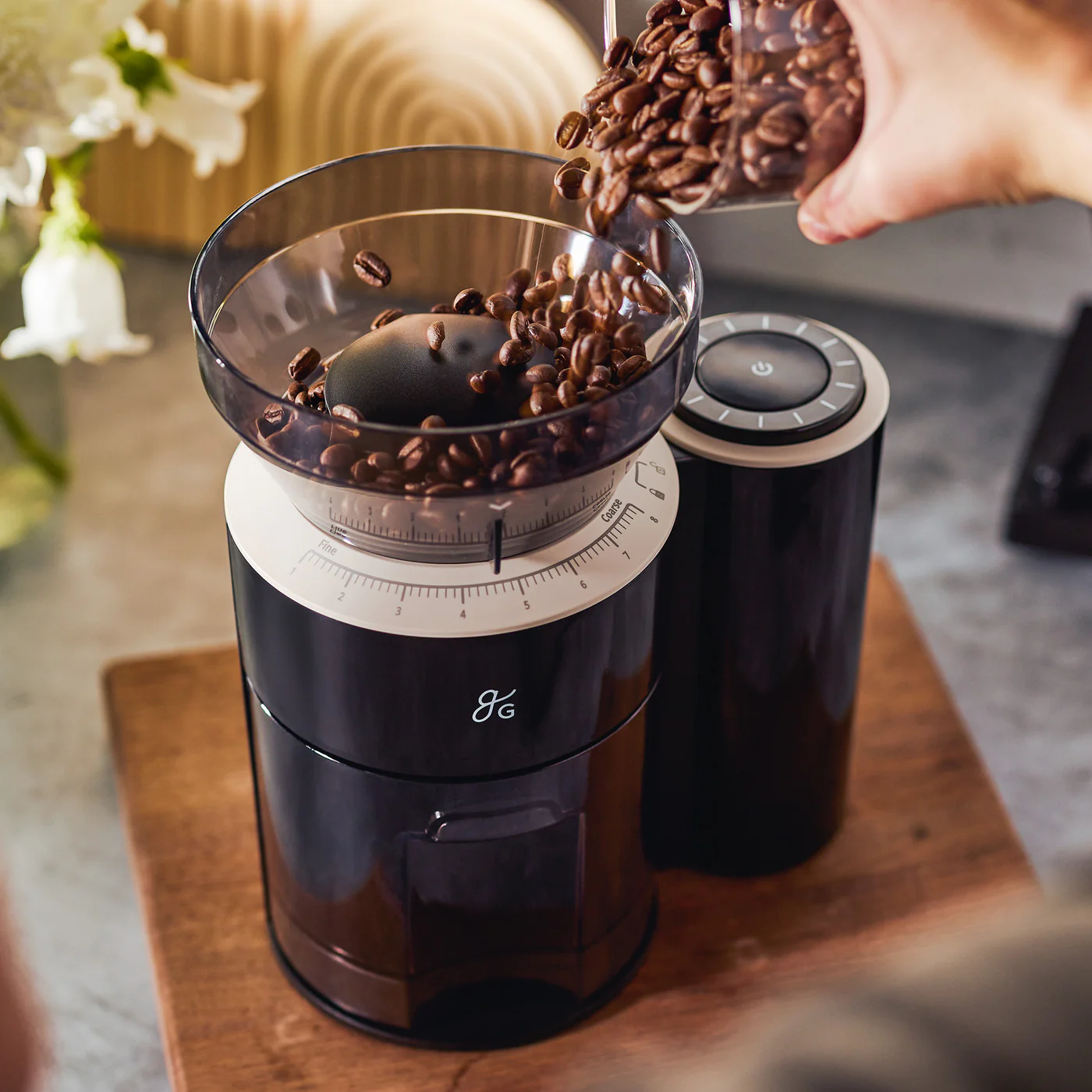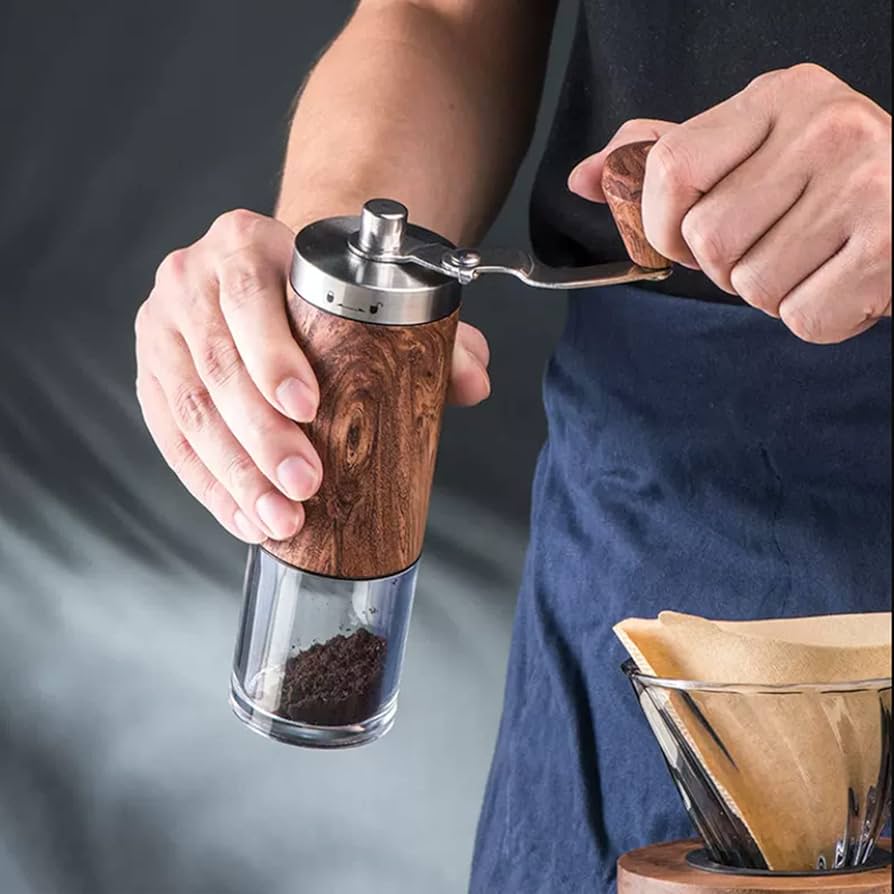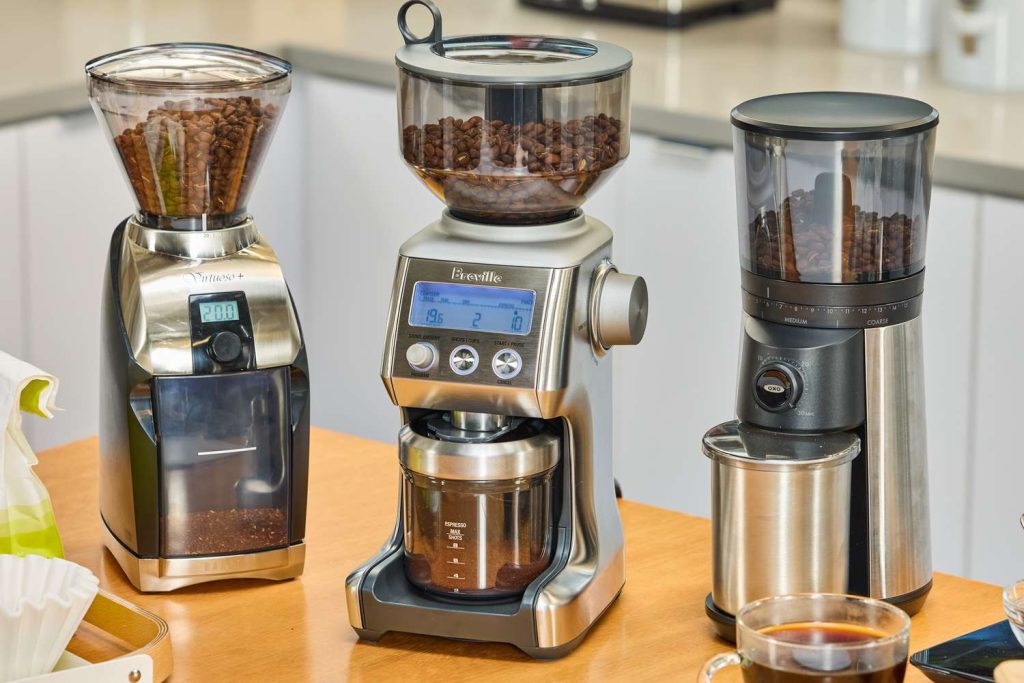Want café-style flavor at home? A great cup starts with freshly ground beans — but not all grinders are equal. This coffee grinder buying guide walks you through burr vs. blade grinders, grind settings, capacity, noise levels, and budget so you can pick the perfect model for your kitchen and brewing style.

- Types of Coffee Grinders
- Flat vs Conical Burrs
- Manual vs Electric Grinders
- Step-by-Step Buying Guide
- Grind Size Guide
- Maintenance & Burr Replacement
- Common Mistakes to Avoid
- Price Tiers & What to Expect
- Final Thoughts
Types of Coffee Grinders
Before comparing features, it helps to understand the two main styles:
Blade Grinders
These use spinning blades to chop beans. They’re compact and affordable but produce uneven particles, which can lead to bitter or weak coffee. Best for casual drip drinkers on a tight budget.
Burr Grinders
These crush beans between two abrasive surfaces (flat or conical). They create a consistent grind, which improves flavor and extraction. Brands like Baratza and OXO offer reliable entry-level burr grinders for home use.

Flat vs Conical Burrs: Which Should You Choose?
Conical burrs feed beans down a cone into a ring, generally running at lower RPM. They tend to be quieter, generate less heat, and are forgiving to dial in — great for home brewing across drip, pour-over, and French press. Flat burrs use two parallel discs. They can deliver ultra-even particles and fantastic clarity, which many espresso fans love, but they’re often larger, louder, and pricier.
- Flavor profile: Conical = round, sweet, forgiving; Flat = clear, separated notes, higher clarity.
- Heat & retention: Lower-RPM conicals reduce heat; flats may require better purging to minimize retention.
- Use case: For most home kitchens, conicals are the value/performance sweet spot; flat burrs shine for espresso precision.

Manual vs Electric Coffee Grinders
Manual grinders are compact, quiet, and travel-friendly. Many offer impressive grind quality for pour-over and AeroPress, with minimal static and excellent consistency. They do require effort — fine espresso grinds can be a workout. Electric grinders offer speed and convenience, wider grind ranges, and better repeatability, especially if you brew for multiple people every morning.
- Choose manual if you brew one or two cups, value silence, or want a reliable travel grinder.
- Choose electric for busy households, espresso dialing, and multi-method brewing.

Step-by-Step Coffee Grinder Buying Guide
1. Choose the Right Burr Type
Flat burrs offer precision and clarity, while conical burrs tend to be quieter and less messy. For most homes, conical burrs strike the best balance of cost and performance.
2. Check Grind Settings & Adjustability
Look for at least 20–40 grind steps if you brew multiple styles (espresso, drip, French press). Stepless grinders allow micro-adjustments but are pricier.
3. Match the Grinder to Your Brew Method
Espresso needs fine, consistent particles. French press and cold brew work best with a coarse setting. If you use several brew types, choose a grinder with a wide grind range.
4. Consider Capacity & Counter Space
Entry-level models hold 200–300g of beans, enough for daily home use. Larger hoppers are useful for frequent brewers but take up more space.
5. Noise, Static & Cleanup
Lower RPM burr grinders stay cooler, reduce heat transfer, and make less noise. Anti-static bins help prevent messy grounds on the counter.
6. Set a Realistic Budget
Expect $40–$60 for blades, $100–$180 for starter burrs, and $300+ for prosumer espresso grinders. Spending a bit more upfront usually saves money on upgrades later.
Grind Size Guide for Popular Brewing Methods
Grind size controls extraction time. Too fine = bitter and astringent; too coarse = thin and sour. Use this as a starting point, then adjust to taste:
- Espresso: Fine (table salt). 25–30 sec shots.
- Moka Pot: Between fine and medium-fine.
- AeroPress: Medium-fine; adjust by recipe.
- Pourover (V60/Kalita): Medium; aim for 2:30–3:30 brew time.
- Drip Coffee Maker: Medium.
- Chemex: Medium-coarse; longer drawdown.
- French Press: Coarse; 4–5 minutes steep.
- Cold Brew: Very coarse; 12–18 hours steep.
Grinder Maintenance & Burr Replacement
Grinders work best when burrs stay free of oils and fines. Brush the chamber weekly and deep-clean monthly using grinder tablets (or a pinch of rice only if the manual allows it). Avoid flavored or very oily beans that can gum up burrs and chutes.
- Static control: A light RDT mist (one spritz of water on beans) reduces clinging grounds.
- Burr lifespan: Replace burrs every 1–2 years for typical home use, sooner for daily espresso or dark/oily beans.
- Storage: Keep beans sealed and away from heat to reduce oil transfer and rancid flavors.
Common Mistakes When Buying a Grinder
- Choosing by brand hype instead of grind quality
- Ignoring noise level (important in open kitchens)
- Buying a blade grinder for espresso use
- Not checking if spare burrs are replaceable
Price Tiers & What to Expect
- Under $50: Blade grinders only. OK for casual drip; inconsistent for anything nuanced.
- $100–$180: Entry burrs with 20–40 steps. Big upgrade for drip/pour-over.
- $200–$300: Mid-range sweet spot; better materials, lower retention, wider ranges.
- $500+: Prosumer espresso precision, stepless control, premium burr sets.
Cleaning & Maintenance
Brush out the chamber weekly and wipe the hopper to prevent oil build-up. Deep-clean monthly. Replacing burrs on schedule keeps flavor sharp and grind times consistent.
Final Thoughts
A good grinder is the foundation of every brewing method — from Moka pot to pour-over. Start with the right burr style, make sure the grind range fits your coffee habits, and choose a size that feels at home on your counter. Once dialed in, you’ll taste the difference in every cup.
Related reading:
- Best Coffee Makers for Small Kitchens
- How to Clean a Coffee Maker Without Vinegar
- Best Electric Kettles for Tea & Coffee
For a deeper dive into grind science, see this excellent guide from Home Grounds.


